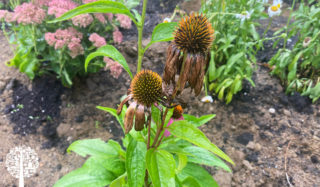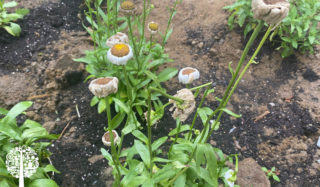Lazy gardeners, we’ve heard your calls, and we are here to deliver! Plenty of garden tasks still need to be done this time of year, but let us lighten the load for you a little bit. You already know that raking leaves is a thing of the past (you do know that, right?), but deadheading flowers and cutting back shrubs and ornamental grasses can wait until spring too! In a fantastic turn of events, choosing to ignore these tasks doesn’t make you lazy; it makes you eco-friendly!
What Is Deadheading?
Deadheading means removing spent flowers, seed heads, and fruits to promote new or more vigorous plant growth. It can also prevent flowers from self-seeding and taking over a space.
When To Deadhead
In the spring and early summer, it’s wise to pinch out the first few flower buds that appear on a plant to encourage a bushier look or prolific blooms as the season progresses.
It’s also essential to deadhead spent flowers throughout the summer so the garden continues to bloom. Leaving dead flowers or fruits on a plant will keep it from reaching its full potential.
But when the colder temperatures draw near and your plants have little to no time left to bloom, consider giving deadheading a rest, at least on some of the flowers in your garden.
Why Stop?
Let anise hyssop, Liatris, sunflowers, coneflowers, asters, yarrow, and goldenrod go to seed so your local bird population has something to eat over the winter.
The same goes for cutting back dead or dying plant material, such as hydrangeas, hostas, ornamental grasses, and more. Leaving the dead plant matter provides a safe habitat for various insects and creatures throughout the cold months.
I understand not every gardener likes the look of dead plants, and I also get that deadheading gives perennials new life in the spring. But trust me, leaving the old stalks and foliage will not kill the plant! And if you can resist deadheading at least some of your flowers for the winter, you’ll be doing a world of good for the local ecosystem.

